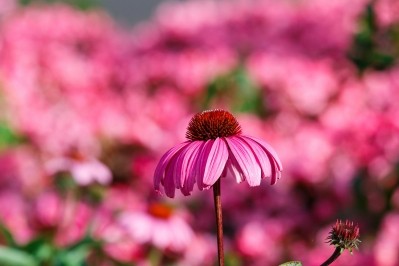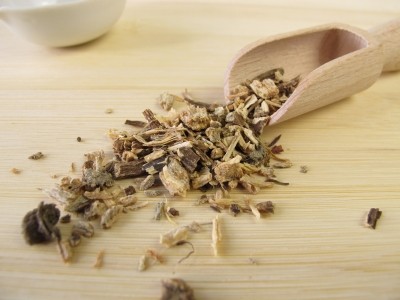Echinacea's drawbacks keep it as immune health stalwart rather than superstar

If one’s measuring stick is ingredients that have stood the test of time, echinacea has to stand at the very top of that list. Its traditional history of use extends to the herbal lore of Native American tribes of the High Plains such as the Kiowa, Pawnee, Cheyenne and Lakota.
Long history of use
Starting with the modern development of echinacea as a supplement ingredient by Swiss herbalists more than five decades ago, the ingredient has made steady progress in the marketplace. But confusion about when to use it has limited the proof of its efficacy. The common theme is that for best results the ingredient must be taken at a high dose at the very first sign of the onset of cold and flu symptoms, which has made it difficult to efficiently sign up research subjects.
“It has been around longer than the supplement industry has,” Mark Blumenthal, founder and executive director of the American Botanical Council, told NutraIngredients-USA. “It was the most famous herb in use by the Native American tribes of the Plains. However, their uses for its was different than what we use it for today. They used it for things like snake bites and skin conditions.”
Blumenthal said the evidence trends toward beneficial effect in echinacea.
“I think that echinacea has a developing and growing clinical body of evidence for supporting its use for helping to prevent and possibly treat upper respiratory tract infections related to colds and flu. But one of the big problems with echinacea in the clinical literature is that there are many different preparations that have been used generically,” he said.
“For one thing, you have three species that are used: Echinacea purpurea, Echinacea angustifolia and Echinacea pallida. You also have different parts of the plants that are used: the root and the leaf and the flower preparations that were developed by the Germans. You have dried roots, dried leaves, tinctures, fresh pressed juice, so the permutations are almost endless,” Blumenthal said.
Developing evidence
Even with those drawbacks, the evidence for echinacea is there. A meta-analysis published in 2007 in The Lancet Infectious Diseases (Vol. 7, Pages 473-480) concluded that echinacea may cut the risk of catching the common cold by approximately 60%.
Researchers from the University of Connecticut combined the results of 14 different studies with positive results. In one of the studies they found in that echinacea taken in combination with vitamin C reduced cold incidence by 86%, and when the herbal was used alone the incidence was reduced by 65%.
The largest study to date with E. purpurea (A. Vogel Bioforce AG’s Echinaforce product) was published in 2012 and indicated that the duration of the common cold may be reduced by 26%, and the number of recurrent colds decreased by 60%. This study was a gold standard randomized, double-blind, parallel, placebo-controlled clinical trial with 755 participants, (M. Jawad et al. Evidence-Based Complementary and Alternative Medicine, doi: 10.1155/2012/841315).
Bioforce, of Roggwil, Switzerland, followed that study up with another study in 2015 on its Echinaforce Hotdrink product, which is a proprietary combination of a concentrated echinacea herb and root extract and elderberry, and found that it is as effective as Tamiflu (antiviral medicine) for the early treatment of flu. Data from 473 patients exhibiting flu symptoms for less than 48 hours indicated that the Echinaforce Hotdrink syrup and oseltamivir (Tamiflu, Hoffmann-La Roche AG, Switzerland) are approximately equal in their therapeutic effects.
Difficult to fit herb’s effects into research model
Despite these compelling studies, there have been enough studies with ambiguous results that the herb has a poor reputation for efficacy in the broader medical research community. Many mainstream medical information outlets opine that there is no conclusive evidence of efficacy. Blumenthal said much of this stems from the constraints imposed by the modern research paradigm.
“Naturopaths and other integrative health care practitioners will always tell you is the time to take echinacea to fend off a cold or the flu at at the very first sign of a symptom. So for example we’ve had studies using college students who were enrolled when they started noticing symptoms. But by the time they decided they were getting a cold, to getting around to signing up for the study and actually getting dosed, it was usually too late,” he said.
Beth Lambert, CEO of herbal supplement manufacturer Herbalist and Alchemist, concurred that the herb’s peculiar dosing profile has made it something of a research pariah.
“If you use it early enough when something is just coming on and you use it frequently and in high dosage you see very good clinical result,” Lambert said. “I think when it fell out of favor was when studies came out that were using low dosages and started after the cold and flu situation had developed,” she said.
Wildcrafting under threat
Lambert said that there is some disagreement among botanists about the differentiation of the various species. The various DNA profiles are very similar, leading to the assumption that the profiles of the bioactives within the plant are not hugely different.
“Our combination echinacea is a combination of the three species. When you look at the chemistry, the constituent profiles tend to overlap,” she said.
What’s more important, she said, is where the plants were grown and how they are harvested. Lambert said the best echinacea in her experience continues to be the wildcrafted sources. So while the herb has been a consistent seller for Herbalist and Alchemist, its future is unclear.
“The limitations in some of the species is they have been primarily wildcrafted. There have been a few people who have been able to bring it into cultivation. The cost of getting wildcrafted plants is going up and it is becoming harder and harder to find people to do that work,” she said.

















